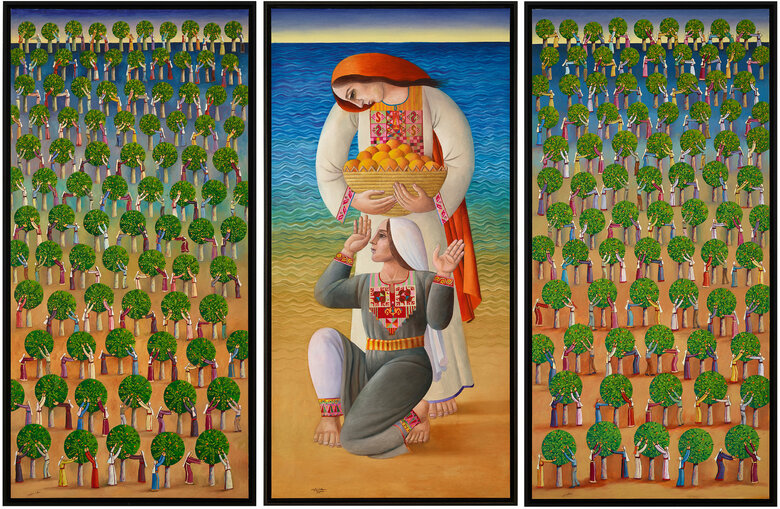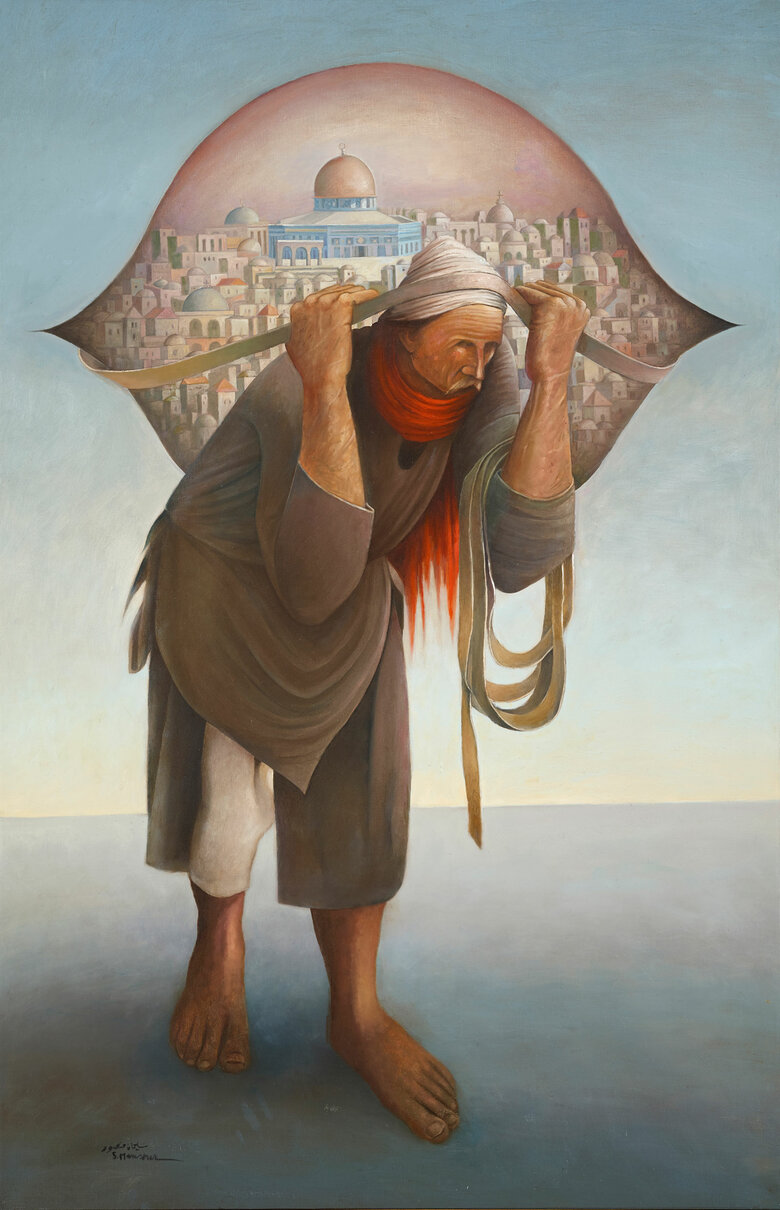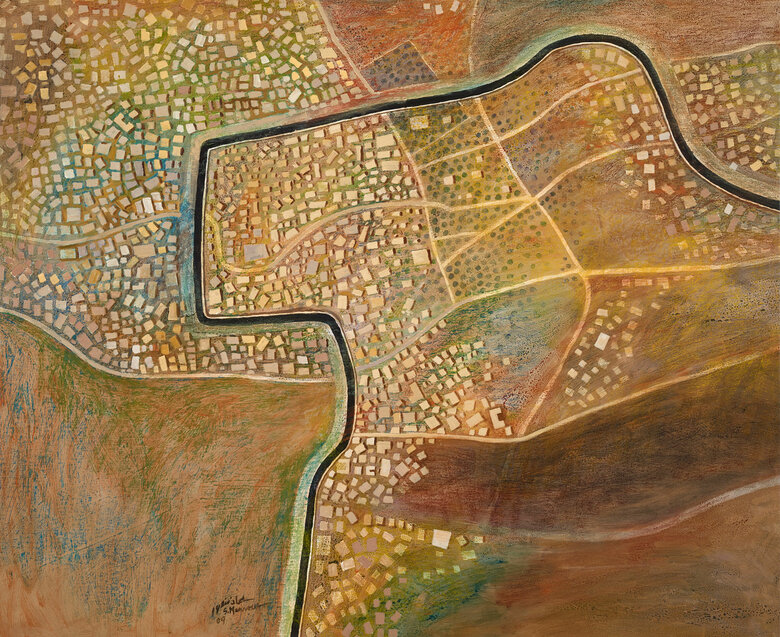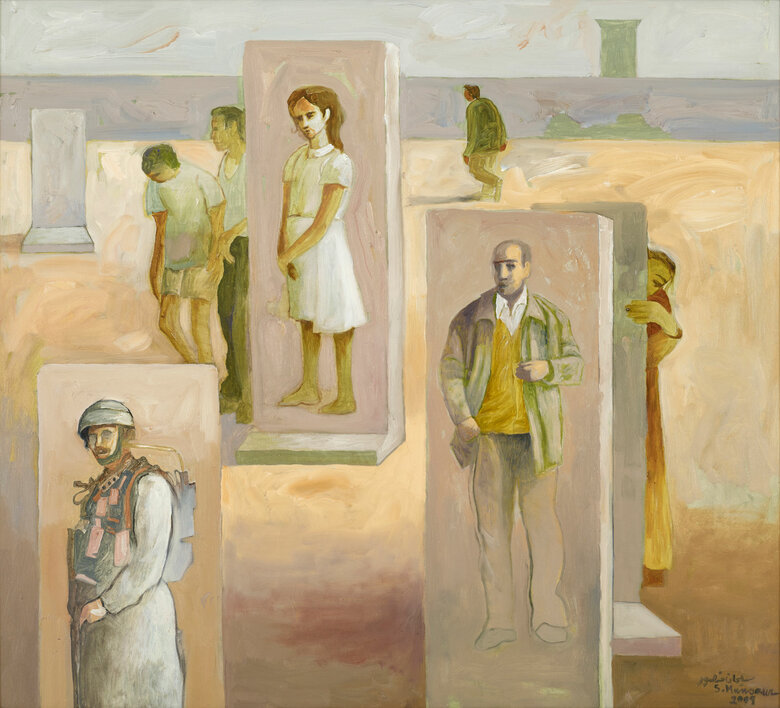The artwork titled Homeland, 2010, by artist Sliman Mansour, encapsulates the experiences of confinement of Palestinians behind a security barrier along the border with Israel, and experiences of dehumanization at checkpoints and Israeli-controlled border crossings.
The painting’s horizontal composition is vertically divided into three parts, showing hallways with people packed between thick concrete walls. Mansour employs a commanding use of linear perspective, emphasizing the towering height of the walls and shrinking the human figures to portray the concept of dehumanization. Notably, from the one-point perspective, the vanishing point for the walls is lower than that of the individual, allowing the heads to always be perceptible. Such a placement enhances the visual impact of the concept of walls closing in and towering over the heads of Palestinians.
The restricted color palette of black, white, and brown, coupled with the nuanced postures and facial expressions of the depicted figures, collectively foster an emotionally charged atmosphere, invoking a profound and seemingly unending sense of sorrow.
As we delve into Mansour’s extensive body of work spanning decades, it becomes evident that recurring themes of movement restriction and steadfastness shape his portrayal of Jerusalem, the Palestinian landscape, and the homeland more generally. These themes become a commentary on the enduring injustices faced by the Palestinian people.
Signed in Arabic and English and dated "010" on the lower left front

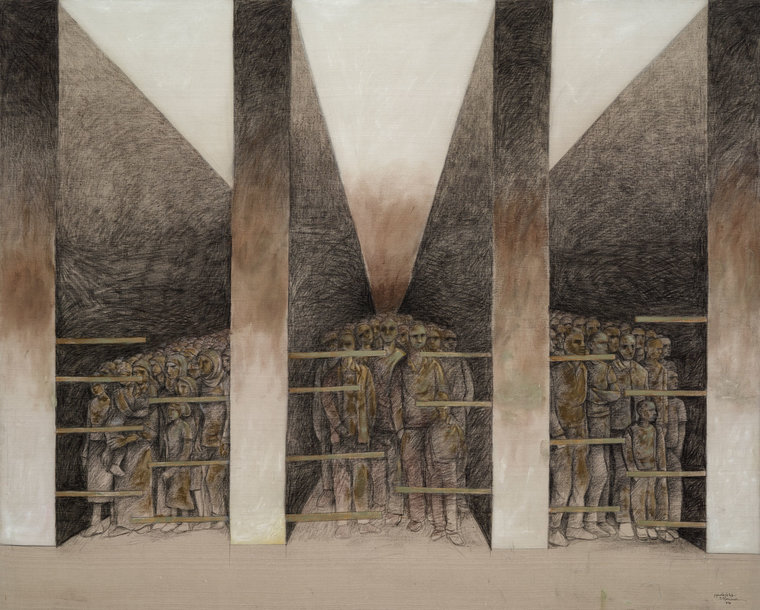

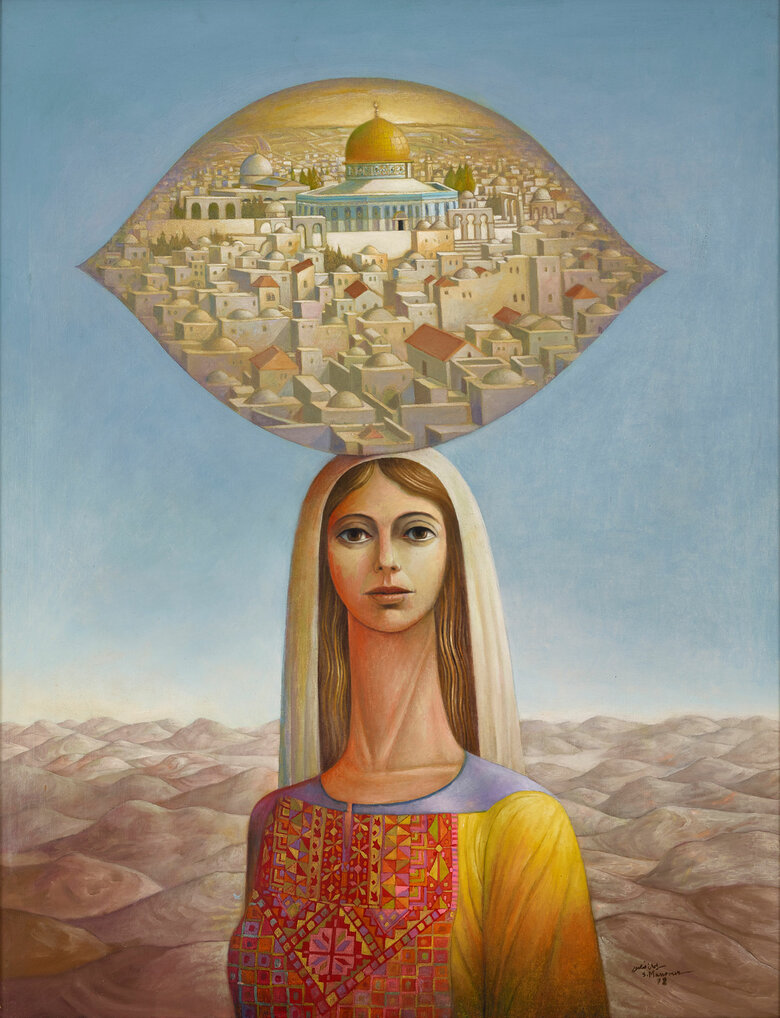

_SuleimanAnisMansour_Front.jpg)
